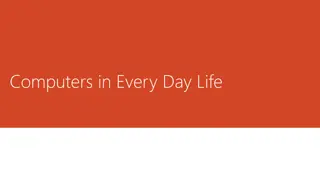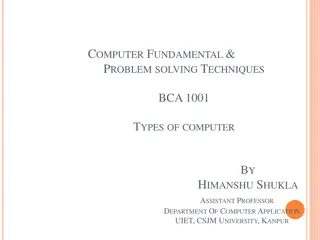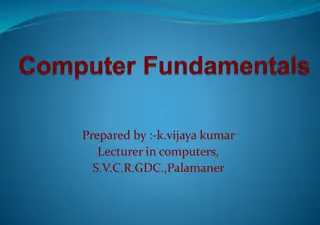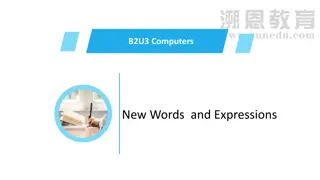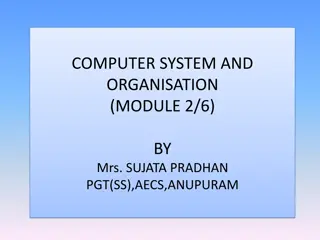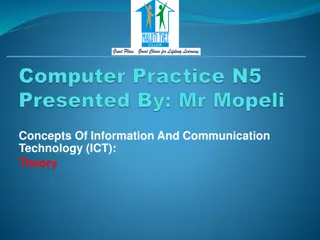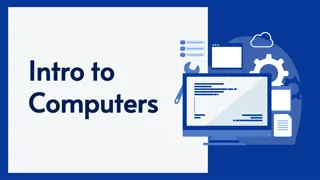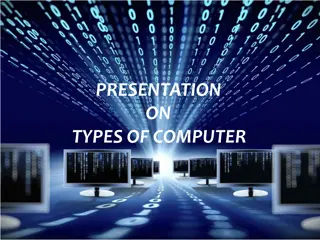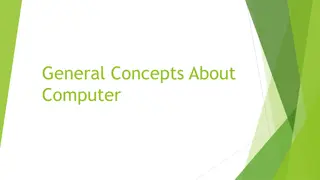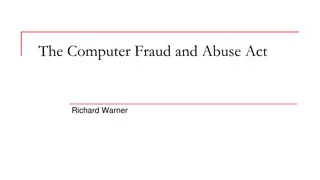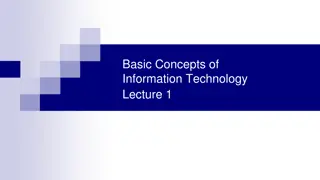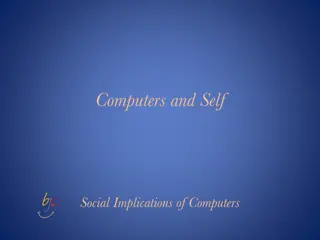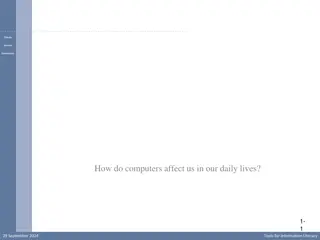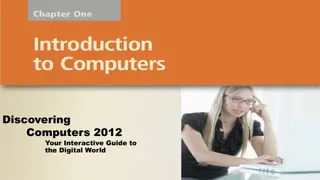The Evolution of Computers in Education: Social Implications Unveiled
Computers have significantly impacted education, from the early days of Plato and BASIC programming to the modern era of MOOCs. They have revolutionized teaching methods, standardized testing, and student learning experiences, leading to both positive advancements and challenges in the education system.
Download Presentation

Please find below an Image/Link to download the presentation.
The content on the website is provided AS IS for your information and personal use only. It may not be sold, licensed, or shared on other websites without obtaining consent from the author.If you encounter any issues during the download, it is possible that the publisher has removed the file from their server.
You are allowed to download the files provided on this website for personal or commercial use, subject to the condition that they are used lawfully. All files are the property of their respective owners.
The content on the website is provided AS IS for your information and personal use only. It may not be sold, licensed, or shared on other websites without obtaining consent from the author.
E N D
Presentation Transcript
Computers in Education Social Implications of Computers
Pop Quiz! What s the most important effect computers have had on education so far?
Multiple Choice Tests The intent of computer grading of tests was to eliminate a bit of drudgery for teachers to enable large-scale standardized testing Unintended consequences of computer grading of tests have included profoundly changing the epistemology (what is knowledge?) of schools to emphasize factual knowledge over ability to analyze texts, creativity, etc. fueling a change in national education policy so that test scores are the sole or primary means of evaluating schools and teachers as well as students. ... thereby giving rise to widespread cheating by teachers!
Very early days: Plato, 1960 "[I]t established key on-line concepts: forums, message boards, online testing, e-mail, chat rooms, picture languages, instant messaging, remote screen sharing, and multi-player games." (Wikipedia) "[Donald] Bitzer, regarded as the Father of PLATO, succeeded because of his rejection of modern educational thinking, and returning to a basic drill-based educational system; his team improved existing systems by allowing students to bypass lessons already learned." (Wikipedia) "[T]he PLATO system was re-designed, between 1963 and 1969; PLATO III allowed 'anyone' to design new lesson modules using their TUTOR programming language, conceived in 1967 by biology graduate student Paul Tenczar." (Wikipedia)
Early days: BASIC on 8-bit micros Very little educational software Primitive word processing Nothing packaged with the computer except BASIC interpreter, so kids were taught programming by default. 1990s-2010: All the software is already written, so why teach programming? Instead, computer literacy classes teaching Word and Google. 2010-now: NSF-driven effort to attract more students, especially women and minorities, to computer science. BJC is part of that effort 2013: code.org brings teaching programming to the mainstream
Judah Schwartzs Continuum TOOLS MICROWORLDS TUTORS Word processor Interactive geometry Drill Browser Physics simulation CAI Programming Database (e.g., atlas) CMI language
Okay, a word about MOOCs Pro: Way better than nothing for people stuck in Podunk. Learn from the best lecturers. Encourage learning for its own sake (vs. credentialling). Con: Overemphasis on lectures (and maybe homework) over discussion and a community of learners. Encourage universities to think of courses as cash cows. Not so good at credentialling.







